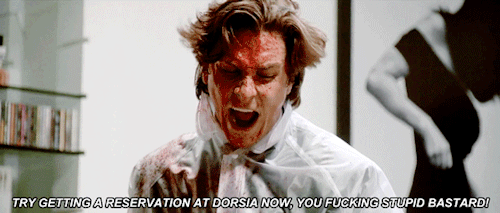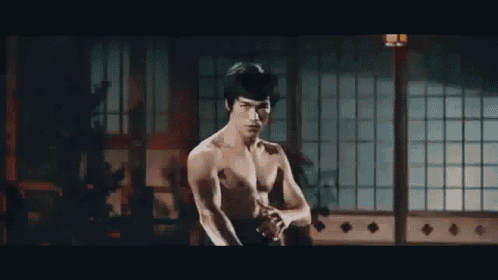Becoming a tattoo artist is hard for most. Plus, finding an apprenticeship, honing your craft, chasing a bag, and growing your network takes tremendous effort.
Genesis AKA Bruja Del Bloque has been through it and going strong but a lot of people have tried to knock her down along the way.
I recently had a chance to meet with BDB at Nice Tattoo Parlor in Brooklyn. She was tattooing an outline of a photograph of a client and his mother.
I learned a lot from the woman and artist who in essence just wants to be the best she can be every day.
Genesis started her journey like most tattoo artists, she was a creative person who liked to draw. She went to the High School of Art and Design.
Even though tattooing was on her mind, like most young adults, her parents implored her to get a college degree. So, she pursued a degree in graphic design. But life has a funny way of forging new paths through adversity.
The Beginning of the Beginning
In her junior year of college, her financial aid ran out.
“I thought well I can’t work a regular job because I get government assistance and I’m living in Section 8 apartment housing. If I work a regular job, my rent goes up, my mom’s killing me.”
Without a job, she couldn’t pay to finish school but with a job, she would put her family’s living situation at risk.
“So I’m odds out, but what’s the only thing I do know how to do? Draw. But I need money now.” As her last paid semester was coming to an end, she found an out.
“I saw this kid sitting next to me. He was covered in tattoos, and then that’s when the idea went ‘boom.’ I was like, I can do tattoos.”
That kid complimented her design skills and shared that he was a tattoo artist. She asked her classmate if he taught others to tattoo and he offered to teach her.

Apprenticeships from hell
“I was like, ‘okay if you teach me it’s going to be strictly business. Because I don’t want you to get the wrong idea, I have a whole boyfriend. You know what I mean?’ and he was like, ‘Yeah, sure.’”
But that wouldn’t be the case. Her new mentor did not honor their initial agreement.
“He would literally dehumanize me, if I didn’t talk to him a certain way, if I didn’t hug him, if I didn’t greet him a certain kind of way.”
After trying to stick it through the abuse, Genesis decided it wasn’t worth it.
She found another tattoo shop to apprentice at. Having dropped out of school she was not going to let someone make things harder for her. But the hardships to get into the industry were not over for her.
It’s not all tattooed roses
“Everyone who starts out in the tattoo industry has a completely different unique experience. But I’ve actually had three apprenticeships. So the first one that happened, the second one? A similar thing just with a different person, and then the third one I got lucky because the owner of the shop was a woman so I didn’t have to worry about that.”
Apprenticing under a female tattoo artist was loads better than her previous experiences with men abusing their power. Still, Genesis was not done learning how to navigate the industry. There’s more to learn besides procedures and techniques when it comes to being a tattoo artist.
“It’s a business where it’s not like a regular job where someone tells you ‘fuck off’ and you can go to HR, it’s a street shop. if they tell you to fuck off, you fuck off and you gotta find another job.”
I asked Bruja Del Bloque how an artist completes an apprenticeship and within the same theme of the uniqueness of the profession, the answer wasn’t so clear.
“It’s different according to the level of balance in the relationship you develop with the person that’s teaching you…”
Genesis continued,
It ends based off of how much you learn and discipline yourself in conversation while satisfying the person’s ego. A lot of what you learn in tattooing doesn’t even have to do with tattooing. It’s how you talk to people and treat people. It’s a form of developing interpersonal communication. ”
Inking skin
Tattooing is not all cool art and skill, it’s so much more.
But even when you’re learning, your skill needs to come from somewhere, and if you’re just focusing on keeping everyone happy you won’t learn the actual procedures that will make you a good artist in the long run.
So how did Genesis’ first tattooing experience go?
“At the first shop I was at, I was scared to tattoo people.”
So Genesis had a proposal for her mentor. She proposed she find people with tattoos that needed to be fixed and work on them for free. A girl with a faded distorted microphone tattoo agreed to Genesis’ offer.
“I thought you can’t go from bad to worse. Wrong. I still fucked it up.”
Genesis explained that assuming you can tattoo if you can draw is one of the biggest misconceptions people have about the art. Paper and skin are decidedly not the same.
“You could draw a line on paper and it stays the same, if you hold a tattoo machine at an angle on the skin you could bleed out the ink, you could spread it. If you go too deep you can scar them. There are so many different variables that paper does not have.”
Knowing and learning this first hand, Bruja Del Bloque became better at her job. She shared that making mistakes just once makes you not want to ever make the same ones again.
“It forces you to be that much more professional, that much more artistic, that much more patient and that much more understanding. You know that your work is going to be on somebody and that somebody is going to see that and either say ‘that’s beautiful! Who did it?’ or be like ‘ew, who did that?’”

Broadening Horizons
Her apprenticeship with her last mentor also afforded her a lot of freedom. She was able to go to conventions, do guest spots, and travel with her husband who is also a tattoo artist.
She even managed to do some charity events where she tattooed for feminine hygiene products. Wherein after she would pull up on shelters in Cali and donate them to women in need.
“It was just me, tattooing not only to just broaden my horizons but also bring about a different spectrum of reality for myself.”
Genesis continued,
“I didn’t want to be closed into this idea that my only career choice would be like working at a street shop, which for most people would be like an office job.”
View this post on Instagram
Broadening her horizons allowed her to fulfill her dream career. Tattooing with the ability to travel and forever expand her outlook on life.
As an artist, Bruja Del Bloque could simply save some money, pick up her tattoo equipment, find a shop somewhere and ask to work for a couple of weeks. The freedom to do so allowed her to embrace her fullest and highest self.
The Spirituality of Tattoos
Besides the amazing reality of being able to travel and work and create art, Genesis stuck it through all the difficulties with a higher sense of tattooing.
The profession has been around for millennia. Inking skin has deep roots and connections to the community, identity, and collective and personal history. As an artist who gives this meaning of identity to someone, the feeling has to hit hard.
“I’m helping someone mark their body to create an identity for themselves.”
Genesis went on to say that ink, pain, and the human soul enduring are what connect us to our ancestors and allow us to be primitive. The ancient practiced artform lets us create our own narratives and “lets us go back to a simpler time” where judgment sparsely exists.
This sentiment is revived when someone gets a tattoo. Because when you mark yourself you’re doing it for yourself and this allows you to “get closer to who you are.” It’s a commitment you make to yourself.
Bruja Del Boque’s Commitments
Genesis has 15 or 16 tattoos. Her favorite is the stick-and-poke tattoo she got from an artist of the Suluape family who specializes in Samoan tatau.
The memory made her misty-eyed as she explained that the artist asked her about her family and history and created the design based on her story.
“I felt a different level of connection with my tattoo journey. I felt like I was part of a collective that goes deeper than what everybody knows about… It feels like something spiritual… Like a connection to God but through the markings on the skin.”
Genesis is highly aware of the power in tattooing. This led her to practice tattooing with the idea of providing medicine and connection to her clients.
“The art will bring you closer to who you are, or what you want to manifest or who you want to see yourself as.”
Advice for new female tattoo artists
Genesis’ advice is heavily influenced by her own experience being introduced to the industry, but it’s potent.
Don’t waste time with male artists. Try to find a credible female artist to teach you.
Be dedicated, have patience and don’t be in a rush to learn something.
Respect your mentor like a sensei but also do your own research and do your own practice.
Use your intuition to know the difference between patience and wasting your time.
You can bolster yourself up to everyone but your tattoos don’t lie. When you go into tattooing with ego, your designs show it.
Don’t get complacent, there’s always someone hungrier.
Ongoing Struggle
Things are better for Genesis now.
She’s on her grind and looking to save up for a trip to Peru or Thailand. I caught her at a time where she’s all about chasing that bag and making things happen for herself.
And despite the haters who compare her to other artists, her light shines outside of their shadow.
“Whatever shadow anyone casts over me, it won’t even stand a chance against the brightness that comes from my work.”
Genesis is not mad at the shadow either, it motivates her to work to get out of it.



















 Okonta interned with the LDF during law school because she wanted to do civil rights work, particularly focused through a racial justice lens. “I started working at the NAACP LDF immediately after law school,” said Okonta.
Okonta interned with the LDF during law school because she wanted to do civil rights work, particularly focused through a racial justice lens. “I started working at the NAACP LDF immediately after law school,” said Okonta.



















